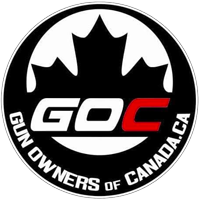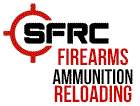Not sure about elsewhere but the test in AB and NT is actually written out with what you have the student do. The only flexibility the examiner has is what cartridges you have to identify.
The break action is so simple they don't test you on it but I'm not sure why they don't test on the semi.
READ EVERY QUESTION CAREFULLY.
Like TheCenturion said some of the questions are written poorly. I don't have any "for examples" right off the top of my head but as long as your reading comprehension is good a question that seems odd on first reading will make sense the second or third time.
We have had some ESL students and they all passed.
Results 21 to 30 of 32
-
04-18-2016, 02:49 PM #21
Last edited by greywolf67nt; 04-18-2016 at 03:10 PM.
HOPING SANER MINDS REIGN IN 2025
-
04-18-2016, 03:26 PM #22Senior Member

- Join Date
- Apr 2012
- Location
- Quesnel, B.C.
- Posts
- 272
That's odd as there shouldn't be a difference between Provinces/Territories considering the PAL/RPAL course is Federal, one would assume it was the same everywhere in Canada.
For sure the practical test is written out with what you have the student do, but the practical test is supposed to begin with "pick two numbers between one and five" as that determines the actions they will do the testing on. In fact there are five versions of the 1-5 list that we change up so once a student does the practical, they can't tell the remaining students what action correlates to the numbers they chose as the matrix changes every-time .. or at least five versions of the matrix are used so it's very hard to determine what action is associated to what number. Now whether or not the instructor actually does this or just "pretends" to and then chooses what firearms he wants the student to be tested on one would never know.
-
04-18-2016, 03:30 PM #23over thinking things a bit ehIn fact there are five versions of the 1-5 list that we change up so once a student does the practical, they can't tell the remaining students what action correlates to the numbers they chose as the matrix changes every-timethe wild still lingered in him and the wolf in him merely slept
"It must be poor life that achieves freedom from fear" - Aldo Leopold
-
04-18-2016, 04:09 PM #24Senior Member

- Join Date
- Apr 2012
- Location
- Quesnel, B.C.
- Posts
- 272
Nope, not at all, it all comes in your instructor kit. Having it written out just makes it easier for the instructor.
It's not much of a stretch to think students would try "helping" each other by letting them know what number they need to choose to get the break open, etc.
-
04-18-2016, 05:17 PM #25Senior Member

- Join Date
- Jun 2015
- Posts
- 1,079
I had to pass the non restricted test twice. Once in Alberta which was normal and once in Quebec as they didn't accept the Alberta test and that was a pain with the stupid Quebec rules. To prove a firearm safe in Quebec involves a cleaning rod on a lot of firearms. I was lucky and got a S&W bolt action rifle and the bolt just slips out so I could look down the barrel from the back. It's against the law to point a firearm at some one in Quebec so you can't look down the barrel from the front as your pointing it at some one. Go figure.
-
04-18-2016, 05:28 PM #26
I prefer these two techniques, after PROV, then to do E:
1) put a barrel light into the chamber, and put a mirror at the muzzle, and look at the mirror.
2) put a barrel light into the muzzle, and put your finger near the chamber, look for light on your finger.
Admittedly there could be a little bit of dirt in there still, but certainly no stuck bullets.
But you can't do those at a CFSC practical test.
During the American Civil War, officers were encouraged to watch their men to ensure they fired their rifles. After a battle it was common to find a couple rifles that had as many as six sets of bullets and powder neatly rammed into a single rifle barrel.
-
04-18-2016, 05:29 PM #27Senior Member

- Join Date
- Apr 2012
- Location
- Quesnel, B.C.
- Posts
- 272
It's an offense to point a firearm at anyone in any Province or Territory, not just Quebec.
When doing ACTS and PROVE, the last thing is examine the bore, if done in the correct sequence the firearm can not be loaded and so is deemed to have been PROVEN safe.
The Practical test starts with picking two numbers and going over what is expected of the student including telling them what deductions will be made for what ever mistake is made IE; two points for pointing in an unsafe direction, two points if your finger is in the trigger guard on on the trigger when it shouldn't be, two points for trying to load incorrect ammo, etc, up to 7 points or an automatic failure if you point the firearm at me or YOU unless you are pointing it at yourself as the last step of PROVE. Automatic failure trying to do a visual bore inspection from the muzzle end if the action is closed. It's all covered in the instructors pre-amble to the test and the student is then asked if they understand everything, if so, we proceed to the testing but it is CLEARLY outlined and DISCUSSED.
-
04-20-2016, 11:28 AM #28
Mind your Fingers and the the Range of Motion.
The fellas I took my course through had tested us on everything.. pump-action, break, lever, single shot and semi-auto, pistol and revolvers.
I got points deducted because of ONE stupid thing.
Now, keep in mind: stupid + weapons = problems.
During a pistol inspection, the instructor couldn't see if my finger was on the trigger or not [it wasn't], and when I turned my wrist down to lay the pistol on its side and show the location of my finger, my movement caused the barrel to move about 2" outside the designated safe-zone-of-control and they nabbed me on that.
-
04-20-2016, 12:10 PM #29The Gunsmithing Moderator

- Join Date
- Apr 2012
- Location
- I live among the creatures of the night (Edmonton)
- Posts
- 29,569
Back when I did it......after letting my FAC expire for many many years, they just told us to pick a gun out of the pile. Perhaps the test has evolved since then. Perhaps it was because I was talking to the instructor before the course started and they got the point that I wasn't there to learn base level stuff about guns. I managed to sit through the first 15 minutes of a video and asked to challenge the example. Passed both the restricted and non restricted with 100%. I remember the only thing that I got wrong was when they held up a 22lr cartridge and asked me what kind of "bullet' it was. I said 'hollow point ?'.....I couldn't actually see the tip. Nope. I said 'round nose ?' Nope.....it's a 22 long rifle. I said '°You asked what kind of bullet it was, not what kind of cartridge it was'. Still marked me wrong...dumb twit.
GOC moderator
Dealer/co-founder/co-owner of Tundra Supply Ltd.
www.tundrasupply.ca
June 2013 - The High River Gun Grab - NEVER FORGET !!!!
Feb 26 2014 - Swiss Arms prohibition and ordered confiscation by the RCMP - NEVER FORGET !!!!!
May 1 2020 - Liberal un-democratic mass prohibition order in council. - NEVER FORGET !!!!!
October 21 2022 - Liberals ban all handgun sales and transfers in Canada via order in council - NEVER FORGET !!!
-
05-11-2016, 12:38 AM #30Junior Member

- Join Date
- Mar 2013
- Posts
- 24
When I did it there was no option in my area to just challenge the test, it was conducted in 4 (I think) classes and then the exam day. So 5 sessions in total (if I recall correctly).
Anyway, the first half of the classes was just going over the material covered in the book. The book is where all the information on the written portion of the exam comes from. From what I remember, the questions for the written portion are all multiple selection and they are all stupid simple. Just read through all the answers twice before selecting the right one. There were no trick questions and I think there was only one trivia sort of question. Something like "To what distance is a .22 LR lethal?" and even though it seems like a sort of trivia type question, the answer to that question and every other one is taken directly from material in the book. My instructor loaned books to us if we needed them, I don't know if that is standard practice for all instructors.
The second half of each class was dedicated to practical aspects of firearms. We were shown actual (deactivated) rifles and shotguns and took turns handling them and practicing the normal safety procedures. The standard sequence was this:
1)The instructor designates which direction is down range.
2)You select the action you want to learn more about.
3)The first thing you do after picking up the firearm is ensure that the muzzle is pointed down range.
4)Ensure the firearm is unloaded. Open the action and inspect the bore, then leave the action open while still keeping your muzzle pointed down range.
5)Read the barrel of the firearm to determine its caliber/gauge and the type of ammunition it is chambered in.
6)Select the correct ammunition from a pile by reading the bottom of the cartridge/shell.
7)Load the firearm while keeping the muzzle pointed down range and put the safety on after it is loaded.
8)Unload the firearm and leave the action open, then set it on the table with muzzle still pointed down range.
*Note* At no point does your finger ever go inside the trigger guard. Ever. At all. There is no time throughout the entire experience from starting to finishing the course that your finger enters a trigger guard.
Throughout the instructor may ask questions.Things like what is the model of the firearm, or what type of safety it has, or even what type of sights it has. The actual practical portion of the exam is entirely based on safety and no trivia about sights of model numbers will be tested (as far as I know).
It really isn't a difficult exam, I got 100% on both written and practical. Just make sure you are familiar with the 5 different actions, and if you get the opportunity to handle the test firearms beforehand then you should. The deactivated firearms we were shown in class were the same ones used in our exam, so if you have the option of class sessions then you should go to them.
Similar Threads
-
Buying used ,Tips?
By bradzilla in forum Newbie FAQsReplies: 1Last Post: 02-28-2015, 01:30 PM -
FAST PATCHLESS CLEANING - Bore-tips™ and Gun-tips™ by Swab-its® are the newest technology in firearm cleaning.
By SelectShootingSupplies in forum Select Shooting SuppliesReplies: 0Last Post: 04-10-2013, 12:37 PM

















 Reply With Quote
Reply With Quote





